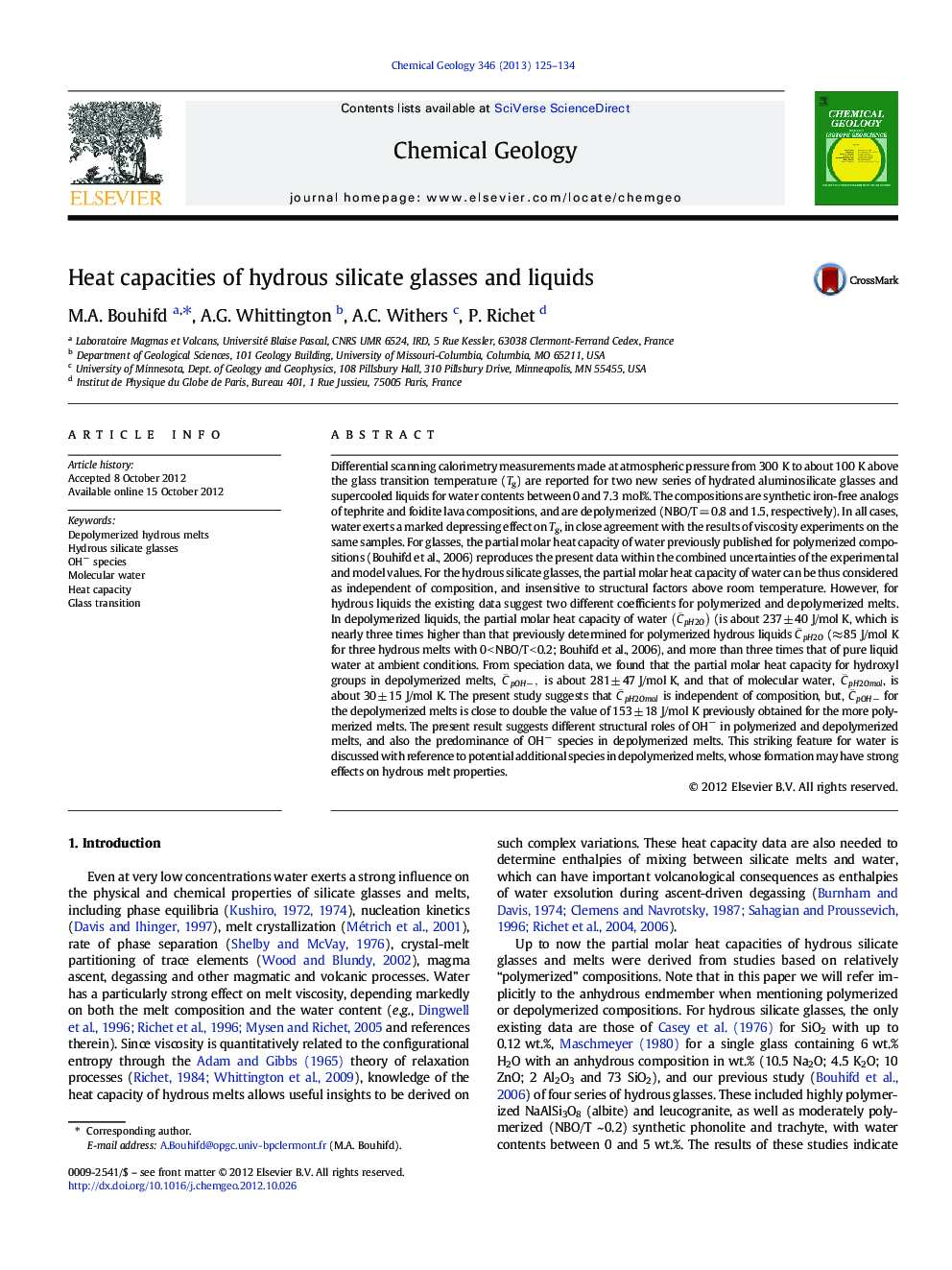| Article ID | Journal | Published Year | Pages | File Type |
|---|---|---|---|---|
| 4699017 | Chemical Geology | 2013 | 10 Pages |
Differential scanning calorimetry measurements made at atmospheric pressure from 300 K to about 100 K above the glass transition temperature (Tg) are reported for two new series of hydrated aluminosilicate glasses and supercooled liquids for water contents between 0 and 7.3 mol%. The compositions are synthetic iron-free analogs of tephrite and foidite lava compositions, and are depolymerized (NBO/T = 0.8 and 1.5, respectively). In all cases, water exerts a marked depressing effect on Tg, in close agreement with the results of viscosity experiments on the same samples. For glasses, the partial molar heat capacity of water previously published for polymerized compositions (Bouhifd et al., 2006) reproduces the present data within the combined uncertainties of the experimental and model values. For the hydrous silicate glasses, the partial molar heat capacity of water can be thus considered as independent of composition, and insensitive to structural factors above room temperature. However, for hydrous liquids the existing data suggest two different coefficients for polymerized and depolymerized melts. In depolymerized liquids, the partial molar heat capacity of water C¯pH2O (is about 237 ± 40 J/mol K, which is nearly three times higher than that previously determined for polymerized hydrous liquids C¯pH2O (≈ 85 J/mol K for three hydrous melts with 0 < NBO/T < 0.2; Bouhifd et al., 2006), and more than three times that of pure liquid water at ambient conditions. From speciation data, we found that the partial molar heat capacity for hydroxyl groups in depolymerized melts, C¯pOH−, is about 281 ± 47 J/mol K, and that of molecular water, C¯pH2Omol, is about 30 ± 15 J/mol K. The present study suggests that C¯pH2Omol is independent of composition, but, C¯pOH− for the depolymerized melts is close to double the value of 153 ± 18 J/mol K previously obtained for the more polymerized melts. The present result suggests different structural roles of OH− in polymerized and depolymerized melts, and also the predominance of OH− species in depolymerized melts. This striking feature for water is discussed with reference to potential additional species in depolymerized melts, whose formation may have strong effects on hydrous melt properties.
► DSC measurements made up to 100 K above Tg are reported for new hydrated melts. ► The partial molar heat capacity of water in glasses is independent of composition. ► The partial molar heat capacity of water in polymerized melts is about 85 J/mol K. ► The partial molar heat capacity of water in depolymerized melts is about 237 J/mol K.
